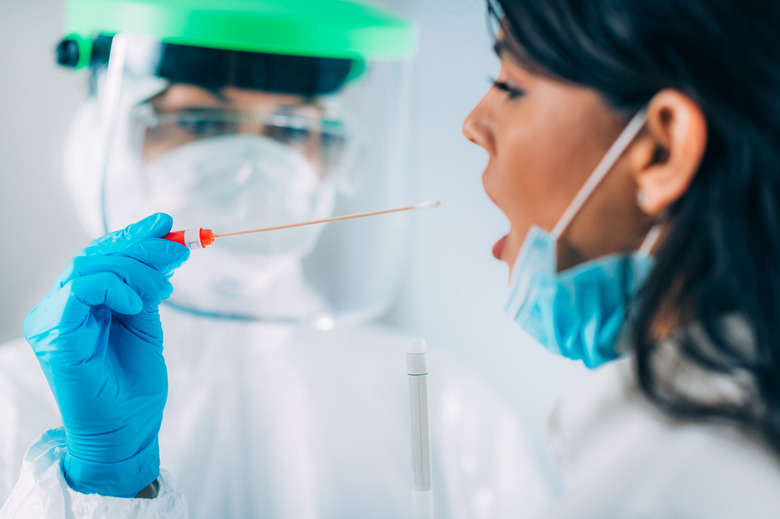Here's What You Need To Know About 'Breakthrough' COVID-19 Cases
When we talk about breakthrough discoveries or innovations, we're usually referring to significant achievements in a field. We saw several breakthroughs during the first year of the novel coronavirus pandemic, as researchers discovered new ways to treat the illness in hospitals. The vaccine candidates currently in use in the US and several other countries are also important scientific breakthroughs that could hasten our return to normal.
"Breakthrough" COVID-19 cases are different, though. In this case, "breakthrough" refers to a particular type of infection that some people might experience in the coming months and years. A breakthrough COVID-19 case refers to contracting the illness at least two weeks after receiving the second vaccine dose.
The coronavirus vaccine candidates that have been authorized for use so far were not approved because they could prevent COVID-19 transmission. The goal was to prevent severe illness and death, and we already have a few extensive studies that prove that's exactly what's happening. Israel's vaccination campaign is easily the most successful so far. The country has already conducted a massive research project that shows the Pfizer/BioNTech drug is just as effective as expected at preventing severe COVID-19 complications.
The more people get vaccinated, the better protected their community will be. Even when people get infected, they're likely to experience a milder form of the illness that won't need hospitalization. Also, some people will get infected because they don't mount the expected immune response. The best vaccines reached 95% effectiveness in clinical trials, but mutations might reduce those figures. That means at least 5% of people who are fully immunized could still catch COVID-19.
Doctors will refer to vaccinated individuals who test positive for COVID-19 as breakthrough cases, and some states are already reporting them.
The Minnesota Department of Health said earlier this week that it's investigating such breakthrough cases that appeared in the state, per Prevention. Fourteen healthcare workers who are routinely tested for work have tested positive. All of them had either mild or no symptoms.
The Oregon Health Authority detected four breakthrough COVID-19 cases at least 14 days after vaccination. Full immunity is expected to develop one to two weeks after the second dose. Infections that occur before the two-week mark are not considered breakthrough cases.
It's still important to study breakthrough cases to determine how COVID-19 develops in vaccinated people. "What we're interested in is whether these cases are mild, symptomatic, or asymptomatic," Dr. Thomas Russo told Prevention. Russo, a professor and chief of infectious disease at the University at Buffalo in New York, said that experts "expect" some people to get infected after vaccination.
No vaccine is 100% effective, so breakthrough cases will happen. "Some people can still get the flu after being vaccinated against influenza, but almost invariably, that illness will not cause hospitalization," Vanderbilt University School of Medicine infectious disease specialist Dr. William Schaffner told Prevention.
Flu vaccines have much lower efficacy, however. They're between 40% and 60% effective, while COVID-19 vaccines have efficacy rates that range from 66% to 95%. These breakthrough COVID-19 cases also explain why people still need to wear face masks and observe other health measures after vaccination.
The CDC has not released new protocols for breakthrough COVID-19 management. Russo said that people should follow the standard protocol for dealing with the illness. This means calling your doctor, going in for a test, and then quarantining at home. Isolation for 10 days after symptoms will also be required.
